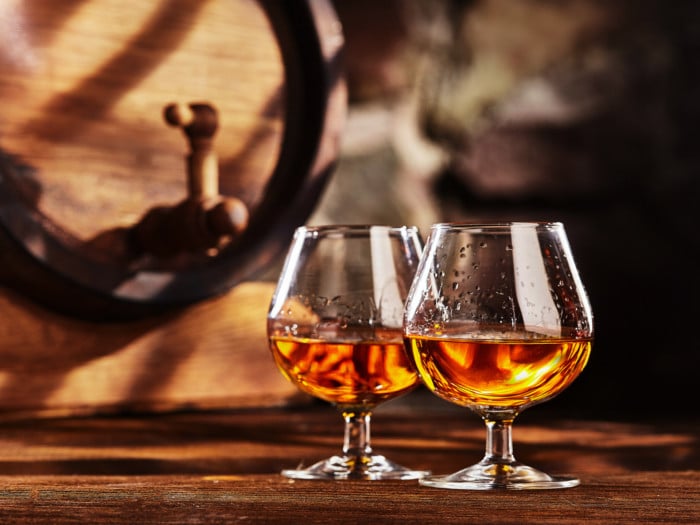Drinking cognac is a luxurious and delightful treat, but there is more to this spirit than you may expect.
What is Cognac?
Cognac is a variety of French brandy that is held to very specific standards of production to ensure quality and maintain the elevated reputation of this alcohol. In terms of taste, it can be compared to whiskey, but is generally sweeter, and often has floral overtones. The color of this alcohol ranges from amber and orange to deep brown and copper. This is often an after-dinner drink, or a dessert liquor, although you can also cook with this type of brandy. [1]

Cognac is a variety of brandy named after the commune of Cognac, France. Photo Credit: Shutterstock
Nutrition Facts
When it comes to nutrition, this alcohol contains 70 calories per ounce. It also contains certain antioxidants, including polyphenolic compounds and ellagic acid in the finished product. [2]
Cognac Benefits
There are a few potential benefits of drinking cognac in moderate amounts, including protection against flu and reducing the risk of heart conditions.
- Antioxidant activity
- Improved heart health and lower blood pressure
- Clear up certain skin conditions and prevent wrinkles [3]
- Relieve a sore throat
- Lower the risk of gallstones
- Protect against influenza and upper respiratory infections
These are not research-backed health benefits. Cognac is sipped slowly, more for an experience than as a health tonic. Alcoholism and binge drinking is detrimental to overall health and can undo any possible good things that moderate amounts can impart. [4]
Cognac vs Whiskey vs Armagnac
- Cognac is distilled twice in copper stills, while Armagnac is distilled once in a column still, similar to bourbon.
- Cognac and Armagnac use most of the same grapes, with one or two additional varieties for Armagnac. [5]
- Whiskey is produced either with a grain or malted barley, while the other two are produced with grapes.
Substitutes
The best substitutes for this French brandy includes other types of brandy, such as Armagnac or wine, but the taste of the food may not be turn out to be the same. When cooking, there are some non-alcoholic options that can provide a similar bite.
How is Cognac Made?
Cognac is made by distilling particular types of white wine two times. The wine used for this process is considered very poor, and not something that would typically be drunk, but it works well in the production of this liquor. [6]
- Step 1: The first distillation occurs after pressing the grapes when the juice is allowed to ferment for 3-4 weeks.
- Step 2: It is then distilled for a second time in a copper pot still, leaving behind a potent 70% ABV liquor.
- Step 3: At this point, the cognac is placed in barrels, very similar to how whiskey or wine is aged.
- Step 4: This imbues alcohol with its rich flavor and also gives the liquor time to reduce alcohol strength by nearly 50%.
- Step 5: To be formally considered a cognac, the alcohol must then be aged for two years in oak barrels, although aging it for longer is also very common. [7]
Word of Caution
Drinking this alcohol in excess, as with any type of liquor, can cause intoxication and loss of motor control, as well as long-term damage to your liver and a higher risk of various chronic diseases, including cirrhosis. Pregnant and breastfeeding women should avoid cognac. [8]
